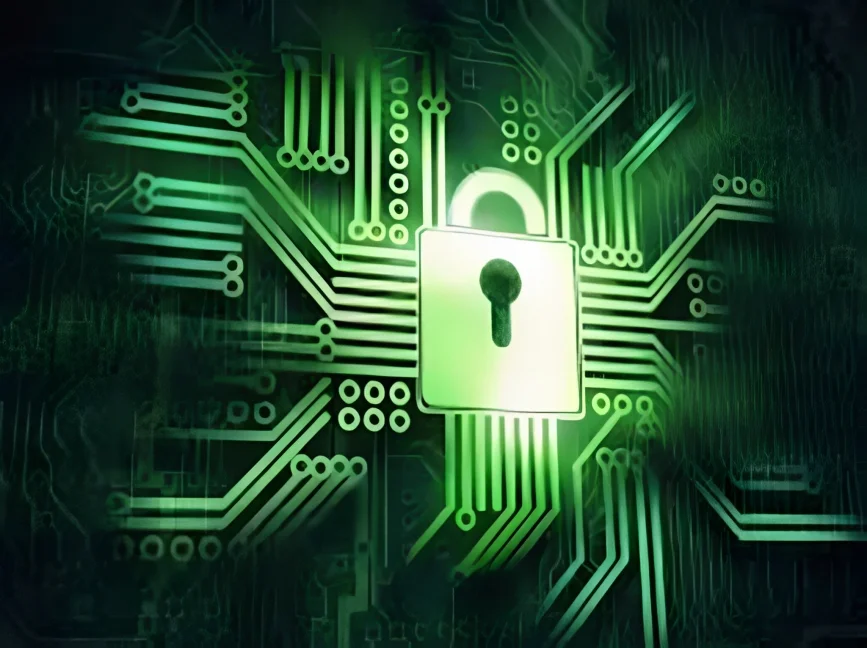How to Protect Your Data from Cyberattacks
In today’s digital age, protecting your data from cyberattacks is more crucial than ever. With the constant evolution of technology, cybercriminals are becoming increasingly sophisticated in their methods, posing a significant threat to individuals and businesses alike. This article aims to provide you with practical tips and strategies to safeguard your data and minimize the risk of falling victim to cyberattacks.

Implement Strong and Unique Passwords
One of the simplest yet most effective ways to protect your data is by using strong and unique passwords. Avoid using common or easily guessable passwords such as “123456” or “password.” Instead, opt for a combination of uppercase and lowercase letters, numbers, and special characters. Additionally, it’s essential to use different passwords for each online account to prevent a single data breach from compromising multiple accounts.
Enable Two-Factor Authentication (2FA)
Your online accounts are made more secure with two-factor authentication. By enabling 2FA, you will be required to provide an additional piece of information, such as a verification code sent to your mobile device, after entering your password. This additional step makes it significantly harder for cybercriminals to gain unauthorized access to your accounts, even if they manage to obtain your login credentials.
Keep Your Software Up to Date
Software updates often include critical security patches that address vulnerabilities exploited by cybercriminals. Therefore, it is crucial to keep all your software, including your operating system, web browsers, and applications, up to date. Regularly check for updates and enable automatic updates whenever possible to ensure you have the latest security enhancements installed.
Be Cautious of Phishing Attempts
Phishing attacks remain one of the most common methods used by cybercriminals to trick individuals into revealing sensitive information. Be vigilant when opening emails, especially those from unknown senders or with suspicious attachments or links. Avoid clicking on suspicious links and refrain from providing personal or financial information unless you are confident about the legitimacy of the request. When in doubt, contact the organization directly using their official contact information to verify the authenticity of the communication.
Utilize Secure Networks
When accessing the internet, it is essential to connect to secure and trusted networks. Avoid using public Wi-Fi networks, as they are often unsecured and susceptible to eavesdropping by cyber criminals. If you must use public Wi-Fi, consider using a virtual private network (VPN) to encrypt your internet traffic and provide an additional layer of protection.
Regularly Backup Your Data
Data backups are invaluable in the event of a cyberattack or data loss. Regularly back up your important files and documents to an external hard drive, cloud storage, or both. This practice ensures that even if your data is compromised or encrypted by ransomware, you can restore it from a secure backup source.
Employ Robust Antivirus and Anti-Malware Software
Installing reputable antivirus and anti-malware software on your devices is crucial for detecting and preventing malicious software from infecting your system. Ensure that your security software is kept up to date and perform regular scans to identify and remove any potential threats.
Educate Yourself and Your Team
Cybersecurity is a collective effort. Educate yourself and your team about common cyber threats, safe browsing habits, and best practices for data protection. By raising awareness and promoting a security-conscious culture, you can significantly reduce the risk of falling victim to cyberattacks.
Secure Your Home Network
If you have a home network, secure it by changing the default router password, enabling network encryption (WPA2 or WPA3), and hiding your network’s name (SSID). These measures make it harder for unauthorized individuals to gain access to your network and intercept your data.
Stay Informed and Updated
Cybersecurity threats are continually evolving, and staying informed about the latest trends and vulnerabilities is essential. Follow reputable sources for cybersecurity news and subscribe to alerts from relevant organizations or government agencies. By staying up to date, you can proactively adapt your security measures to counter emerging threats effectively.
The Importance of Data Protection
Data protection is not just a matter of personal security; it is also crucial for businesses and organizations. A data breach can result in significant financial losses, damage to reputation, and legal consequences. Therefore, investing time and resources in implementing robust data protection measures is a wise decision.
Creating a Culture of Data Security
Protecting your data should not be seen as a one-time task but as an ongoing commitment. Creating a culture of data security within your organization is essential. This involves fostering awareness among employees, conducting regular training sessions on cybersecurity best practices, and establishing clear policies and procedures for handling sensitive information.
Collaboration and Partnerships
In the digital landscape, collaboration and partnerships play a vital role in data protection. Work closely with your IT department or hire reputable cybersecurity professionals to assess and enhance your data security infrastructure. Additionally, consider working with trusted vendors and service providers who prioritize data protection and have robust security measures in place.
The Future of Data Protection
Technology is advancing at the same time that fraudsters’ techniques evolve as well. It is crucial to stay ahead of the curve and anticipate emerging threats. Artificial intelligence (AI) and machine learning (ML) are increasingly being utilized in cybersecurity to detect and respond to threats in real time. Investing in cutting-edge security solutions can significantly strengthen your data protection efforts.
Encrypt Your Data
Encryption adds an extra layer of security to your sensitive data, making it unreadable to unauthorized users. Utilize encryption tools and technologies to encrypt your files, folders, and communication channels. This ensures that even if your data is intercepted, it remains indecipherable to anyone without the encryption key.
Regularly Monitor and Review Activity Logs
Monitoring and reviewing activity logs is crucial for detecting any suspicious or unauthorized activities on your systems. Enable logging features on your devices, networks, and applications to track and analyze user activity. Regularly review these logs to identify any anomalies or signs of potential cyberattacks. Promptly investigate and address any unusual activity to mitigate risks effectively.
Limit Access and Privileges
Restricting access and privileges to your data is an essential aspect of data protection. Implement the principle of least privilege (PoLP), granting users only the permissions necessary for their roles and responsibilities. Regularly review and update user access rights, revoking privileges for individuals who no longer require them. By minimizing access points, you reduce the potential attack surface and limit the impact of any potential security breaches.
Establish an Incident Response Plan
Despite implementing preventive measures, it’s important to acknowledge that no system is completely immune to cyberattacks. Therefore, having a well-defined incident response plan is crucial for minimizing the damage and swiftly recovering from a data breach. Establish clear procedures for incident detection, containment, eradication, and recovery. Assign specific roles and responsibilities to your incident response team and conduct regular drills to ensure everyone is prepared to handle security incidents effectively.
Stay Informed about Emerging Threats
The cyber threat landscape is constantly evolving, with new attack techniques and vulnerabilities emerging regularly. Stay updated on the latest news and trends in cybersecurity through reputable sources. Follow security blogs, subscribe to industry newsletters, and participate in relevant forums or communities. By staying informed about emerging threats, you can proactively adjust your security measures to mitigate potential risks.
Regularly Conduct Security Assessments
To ensure the effectiveness of your data protection measures, it is essential to conduct regular security assessments. These assessments can help identify vulnerabilities, gaps in security protocols, and areas that require improvement. Engage in the services of a reputable cybersecurity firm to perform thorough assessments and penetration testing. By addressing the identified weaknesses, you can strengthen your data security posture and stay one step ahead of potential cyber threats.
Implement Employee Training and Awareness Programs
Employees play a vital role in maintaining data security. It is crucial to invest in comprehensive training programs to educate your staff about best practices and the importance of data protection. Train them on how to identify phishing emails, avoid suspicious links, and handle sensitive information securely. Encourage a culture of cybersecurity awareness, where employees are empowered to report any potential security incidents or concerns promptly.
Secure Your Cloud Infrastructure
As organizations increasingly rely on cloud services for data storage and operations, it is imperative to secure your cloud infrastructure. Choose reputable cloud service providers that prioritize data security and offer robust security measures. Implement strong access controls, encryption, and regular auditing of your cloud resources. Additionally, regularly monitor and analyze cloud security logs to identify any unauthorized access attempts or suspicious activity.
Stay Compliant with Data Protection Regulations
Data protection regulations, such as the General Data Protection Regulation (GDPR) and the California Consumer Privacy Act (CCPA), impose legal obligations on organizations regarding data privacy and security. Ensure that your data protection practices align with the requirements of applicable regulations. Regularly review and update your privacy policies, consent mechanisms, and data handling procedures to remain compliant. Failure to adhere to these regulations can result in significant financial penalties and reputational damage.
Foster a Security-Conscious Culture
Creating a security-conscious culture within your organization is vital to maintaining data protection. Encourage open communication about security concerns and promote a sense of responsibility among employees. Foster a mindset where everyone understands the importance of data security and actively participates in its preservation. Regularly communicate security updates, share success stories of thwarting cyber threats, and recognize employees who contribute to maintaining a secure environment.
Engage Professional Cybersecurity Services
In a complex and ever-evolving cybersecurity landscape, seeking professional cybersecurity services can provide additional expertise and support. Consider partnering with a trusted cybersecurity firm that can assist in assessing your security posture, implementing advanced threat detection systems, and providing round-the-clock monitoring and incident response services. Their specialized knowledge and experience can help safeguard your data effectively and provide peace of mind.
Conclusion
protecting your data from cyberattacks requires a proactive and multifaceted approach. By implementing strong passwords, enabling two-factor authentication, keeping your software up to date, being cautious of phishing attempts, utilizing secure networks, regularly backing up your data, employing robust security software, educating yourself and your team, securing your home network, and staying informed, you can significantly enhance your data protection measures and reduce the risk of falling victim to cyberattacks. It’s important to keep in mind that protecting your data is a continuous process that calls for continuing awareness of potential risks and adaptability to counter them. Stay secure, stay informed, and stay protected.

